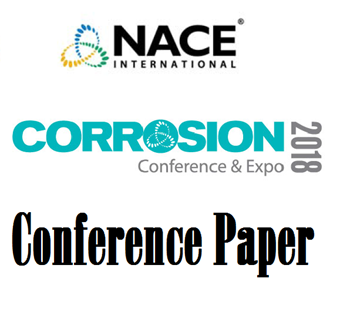Search
Pipelines, Tanks, and Underground Systems
View as
Sort by
Display
per page
51318-11345-Effectiveness of Shorter Corrosion ILI Re-inspection Interval with varied ILI technologies:Finding the Unexpected High Corrosion Growth Rate of External Corrosion and MIC on Tape Lines.
Product Number:
51318-11345-SG
Publication Date:
2018
$20.00
51318-11373-Advanced Multifunctional Coatings for Pipeline Protection and Active Monitoring
Product Number:
51318-11373-SG
Publication Date:
2018
$20.00
51318-11428-Successful Implementation of a Corrosion Management Strategy by Online Injection of Vapor Phase Corrosion Inhibitors to Extend Storage Tank Floor Life
Product Number:
51318-11428-SG
Publication Date:
2018
$20.00
51318-11481-Impacts of Impurities SO2 and H2S on Corrosion of sc-CO2 Pipe Steels
Product Number:
51318-11481-SG
Publication Date:
2018
$20.00
51318-11540-Experience from ER Probes and Coupons from Under Tank Applications of VCI
Product Number:
51318-11540-SG
Publication Date:
2018
$20.00
51318-11560- Calculation of Inspection Intervals for an Ammonia Storage Tank Based on Design Modifications, RBI, Commissioning Inspection, and FEA
Product Number:
51318-11560-SG
Publication Date:
2018
$20.00
51318-11567-Methodologies to Evaluate Compatibility between Cathodic Protection and Vapor Corrosion Inhibitors for Tank Bottom Applications
Product Number:
51318-11567-SG
Publication Date:
2018
$20.00
51318-11617-VCI Installation Considerations At Military Facilities
Product Number:
51318-11617-SG
Publication Date:
2018
$20.00
51318-11627-A Semi-Quantitative Analysis of Dents Associated with Corrosion: a reliability-based approach
Product Number:
51318-11627-SG
Publication Date:
2018
$20.00
51318-11719-Investigation and case study of composite repair performance at low temperatures on buried pipelines
Product Number:
51318-11719-SG
Publication Date:
2018
$20.00
99543 IN SEARCH FOR CRITERIA TO AVOID EMBRITTLEMENT ON PRESTRESSED CONCRETE PIPE
Product Number:
51300-99543-SG
ISBN:
99543 1999 CP
Publication Date:
1999
$20.00
A Corrosion Fatigue (CF) Assessment Method for High-stressed Engine Components in Corrosive Fuels
Product Number:
51317--9001-SG
ISBN:
9001 2017 CP
Publication Date:
2017
$20.00












